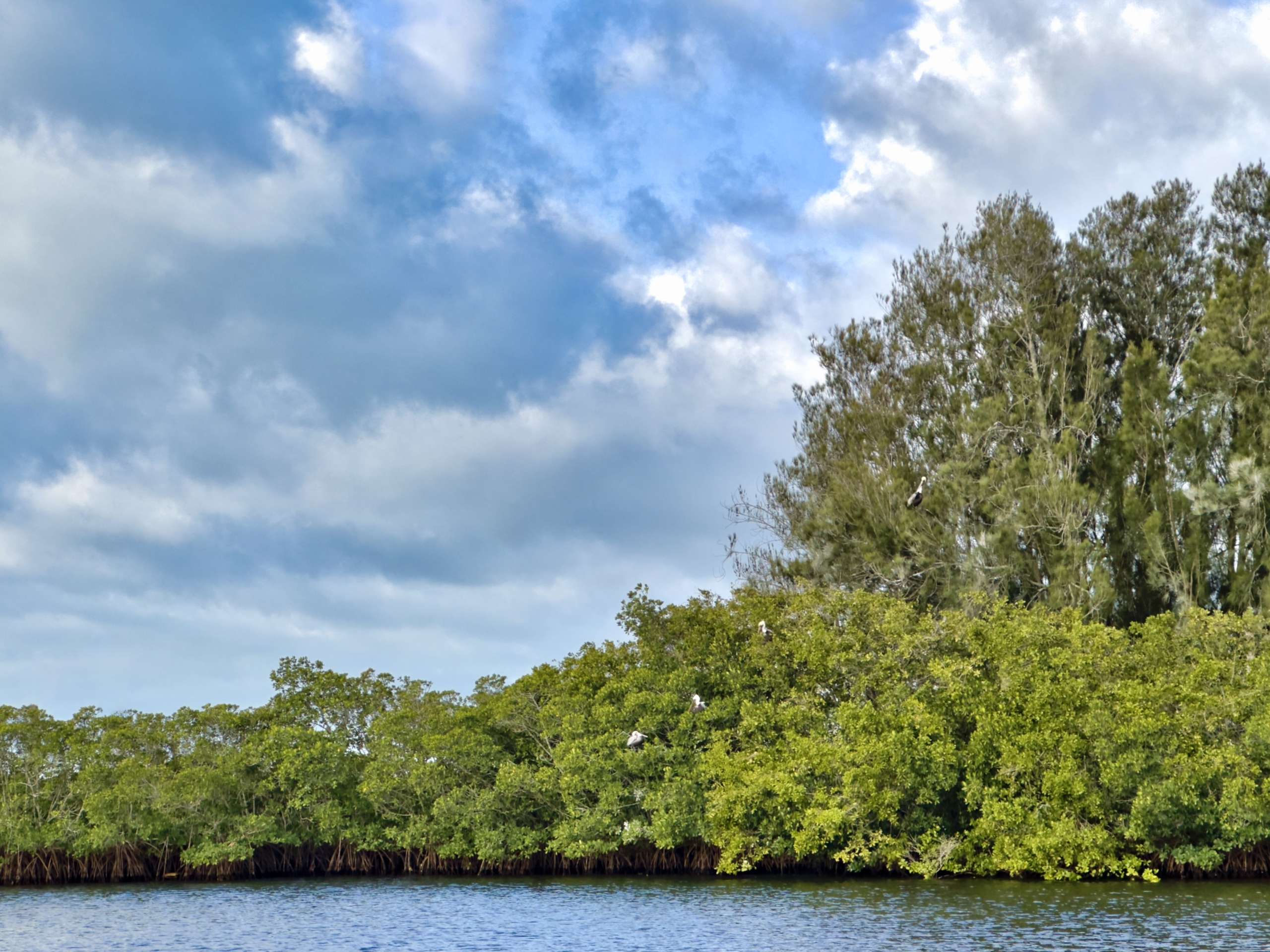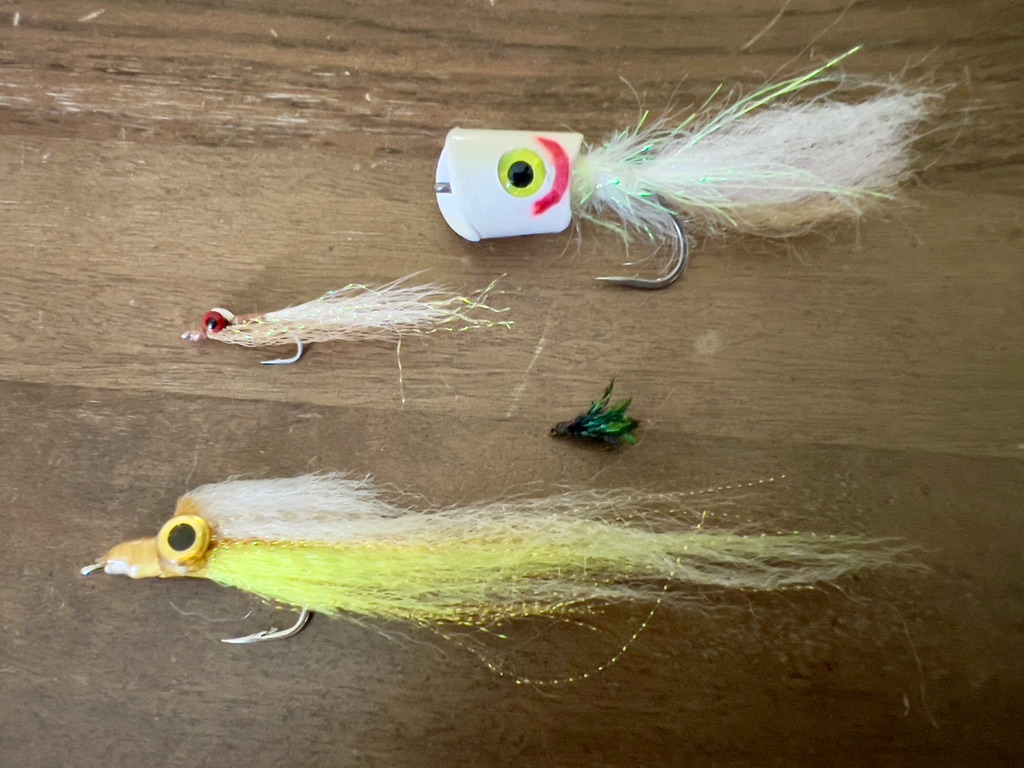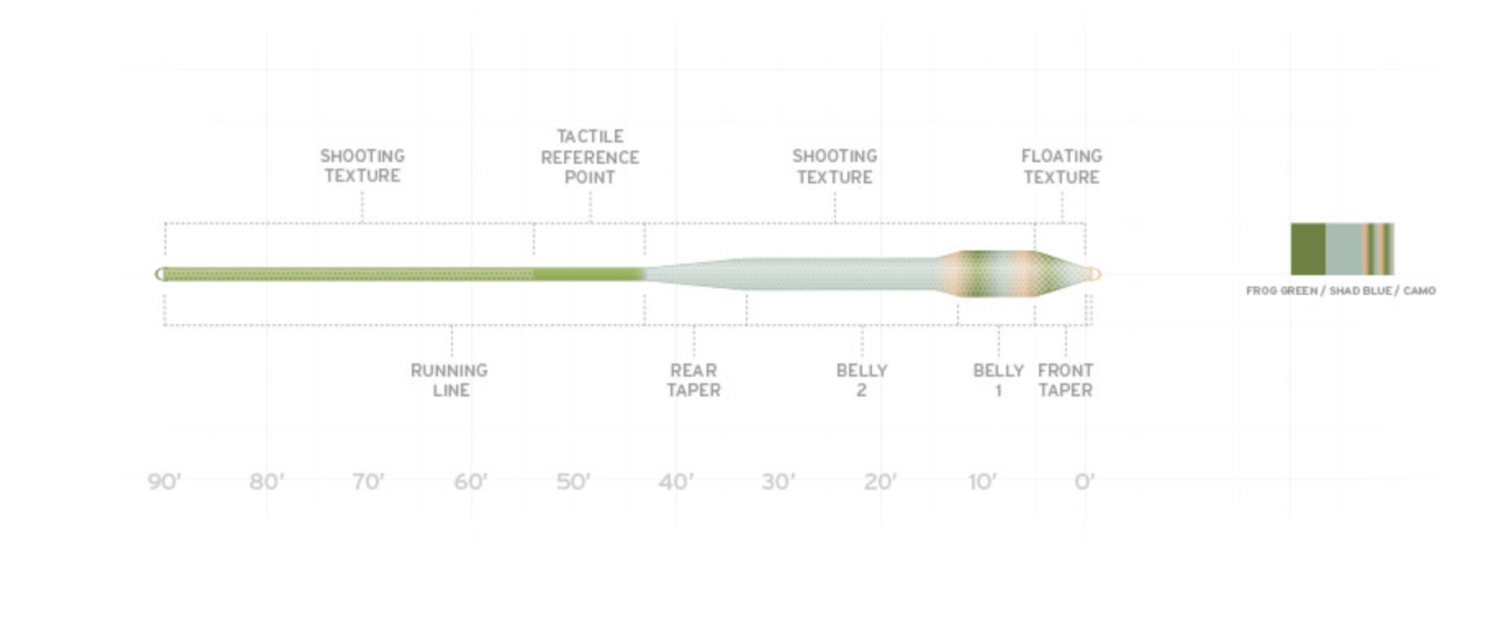 Jonas Magnusson
Jonas MagnussonIt’s all about the weight
The flies we use are too light to be the casting weight, just try throwing one by hand, or try casting them with a spinning rod. So, we cast them with a fly rod/line, we cast the fly line, and it drags the fly along. The line must have enough weight to move the fly we like to use. The fly line is the most important piece of the whole setup – so, always use the best line you can find for the job.

Therefore, we use fly lines of various weights from size 1# to 15#, and the fly line weights are standardized[i]. It’s self-evident that the rods we use will correspond to the weights of the fly lines. Subsequently, we have rods from size 1# to 15#. We interject clear mono (mono – single strand) for stealth between the fly line and the fly we choose to use. When we cast the fly line its weight leads and tows the fly behind it.
The weight of the fly dictates the weight of the fly line, which suggests the weight of the fly rod. Thus, considering the weights of the various components is the central theme of fly casting.
Voila – that’s the fly-casting system in a nutshell.
How to assemble your tackle
The first consideration is the weight/size of the fly you are going to use. The weight of the fly dictates your choice of the fly line weight. The fly line you chose can best be cast with a rod of a certain stiffness.
In other words – the weight of the fly is the determinant of your fly line which is the determinant of the rod used. In general, the fly’s weight you use dictates the components of the casting system. There are exemptions of course. Typical tarpon flies could be cast with 7/8 wt. rods/lines, but heavier rods are needed due to fish size. Also, bass bugs require 7-9 wt. rods/lines, but average bass could easily be landed on 5-6 wt. gear. Bonefish flies fall into this category too.
Flies
The smallest/lightest flies can be cast with the lightest lines. As the flies get bigger/heavier we need heavier lines to move them. Light lines can’t move big/heavy flies, but heavy lines can move both light and heavy flies. However, I don’t know anybody casting a #1 line with a #12 rod. Obviously, when the flies get super heavy they approach the weight that can be cast with conventional tackle. Such heavy flies[ii] become difficult to cast because of their momentum and their kick[iii]. In a nutshell, the fly dictates the line weight, and the line weight dictates rod stiffness.
The leader
The leader’s butt weight must match the line tip’s weight. That ensures the optimal transfer of energy from the fly line to the leader. The terminal parts of fly lines have a short thin level tip. That tip should match the leader’s butt weight to the lightest part of the fly line, not a lot of weight. Even if the leader has a long, level butt section it still won’t transmit a lot of energy. The longer it is, the more energy is dissipated and the harder it will be to cast.
The clear leader has two functions. Firstly, it separates the fly from the opaque fly line. Secondly, it receives force/energy from the fly line which straightens out the leader and turns over our fly. The separation – i.e., the length of the leader you can use is dependent on your casting abilities. If you are using a leader that matches your fly line, and you can’t turn over your leader and fly, then that leader is too long (and/or the fly is too heavy) for you. The savants often advocate for long leaders say 12-15´ forgetting that the average caster can’t turn them over. If you can’t turn over your leader you aren’t in the game, but you certainly are, if you can turn over a shorter leader. So, if you can’t turn over the leader shorten it and/or use a lighter fly. The transmission of force/energy from the fly line to the leader is through weight (not break strength). When the weight of the level tip of the fly line is close to the weight of the leader’s butt, then the transmission of energy/force is optimal[iv]. Rule of thumb for floating lines – the diameter of the leader’s butt should be 70% of the diameter of the level tip of the fly line[v].
The fly line and weight.
Fly lines used to be level but nowadays the most used ones are the weight-forward type with the head and the running line separated. The running line is thin and light. The head just pulls the running line out. So, there is little weight there, it is found in the head of the fly line. To reiterate – a heavy fly needs a heavier fly line to move it as compared to a light fly. Not only do we need a heavy fly line to move a heavy fly, but additionally to facilitate turnover, the weight in the line’s head has been moved forward. We now refer to the line’s weight profile and that simply means where most of the line’s weight resides.

The rod
The rod is used to accelerate the fly line and then launch it. The fly rod can accelerate the fly line to velocities of 20 meters/second (relaxed slow cast) up to 60 meters/second. The faster the tip is moving when we abruptly stop the rod the farther the line will travel. All fly rods can cast a range of fly line weights. Say you have a six-weight rod. That rod can surely cast a 5# -, a 6# -, and a 7# weight fly line. For some rods, the weight bracket can even be bigger (plus or minus two line sizes). If the line gets too heavy for the rod it will bend but now it is going to straighten slowly and become very unpleasant and soggy to cast. On the other hand, if the line becomes too light it becomes hard to bend the rod and the cast suffers accordingly. The fly rods are subjectively rated for a certain fly line. The rating is just a suggestion of some demi god of casting. It is perfectly fine to use a bit heavier or lighter line depending on your needs and casting abilities. Today, most new rods are quite stiff. A good caster can cast lighter lines than the rod is rated for, but it will be unpleasant. Most casters will do much better if they use a line that is heavier than the rod rating, at least one size, often two. And of course, that is assuming the line is properly rated, which most aren’t these days. Matching the fly line to the rod has become difficult because line manufacturers no longer follow AFFTA standards for most lines.
[i] Affta table. https://www.murraysflyshop.com/pages/standard-fly-line-weight-charts
[ii] https://everyjonahhasawhale.com/fly-casting/casting-technique/casting-a-heavy-fly/
[iii] https://everyjonahhasawhale.com/fly-casting/casting-technique/the-fly-line-kick/
[iv] https://everyjonahhasawhale.com/fly-casting/equipment/your-butt-is-too-small/
[v] https://everyjonahhasawhale.com/fly-casting/equipment/take-me-to-your-leader-from-butt-to-fly-through-the-tippet/

